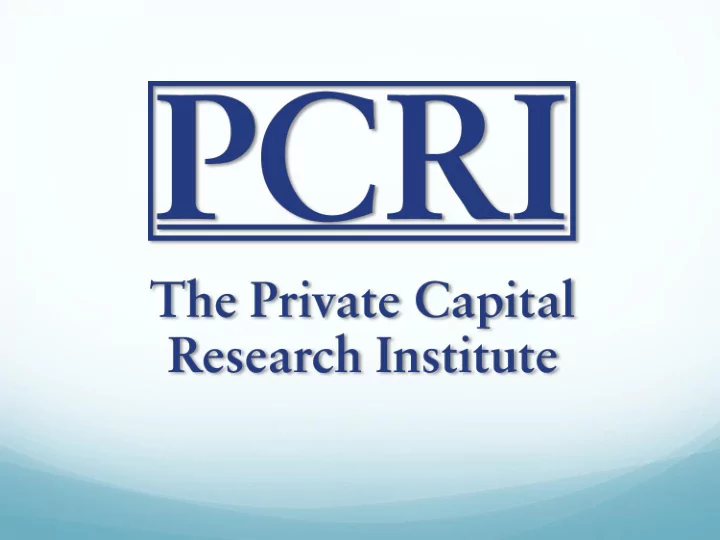

The Disintermediation of Financial Markets: Direct Investing in Private Equity Josh Lerner Harvard Business School and Private Capital Research Institute (with Lily Fang and Victoria Ivashina)
Increasing trend of direct investing in PE: Enormous interest on part of LPs: Sovereign funds, funds-of-funds, endowments, pension funds, and even family offices… Preqin, 2013: 43% of LPs are actively seeking co-investment rights, 11% of LPs are strongly considering. 65% of investors expect to increase their allocations to co-investments (9% expect to reduce). More broadly, there many assertions but little evidence. “Direct Investing in Private Equity” by Lily Fang , Victoria Ivashina and Josh Lerner
Some basics: 1. Traditional PE investment: GP Portfolio company A Fund Investor (LP) Portfolio company B Parallel 2. Direct investment: Co-investment investment Reduced fee and carry Portfolio company Investor (LP) B Quasi-independent investment decision ( decision over the pre-selected set and no control over exit ) 3 . Direct investment: “Solo” investment No fee and carry (but higher in-house Portfolio company Investor (LP) C costs) Fully independent investment decision
Data: The data is proprietary: Collaboration of 7 large LPs. Complete cash flows for 391 direct investments made by a set of large institutions between 1991 and 2011: $23 B capital invested ($14B (61%) co-investments, $9B solo investments). Cash flows are net of fees (relevant for co-investments). In some analyses, back out also estimated costs of running programs. Seven investors are younger and larger than typical LP; probably more sophisticated. Distribution of outcomes of deals (e.g., IPO, bankruptcy) look similar to direct deals in CapitalIQ. “Direct Investing in Private Equity” by Lily Fang , Victoria Ivashina and Josh Lerner
Comparing Public Market Equivalents (PMEs): “Best” measure: performance relative to public markets. Good news: direct investments beat public market. But so do PE funds. Better to compare direct investment PMEs to funds’: Direct buyouts outperform funds in 1990s, but not after. Direct venture capital underperforms in 1990s; and even more in 2000s.
Comparing IRRs and Multiples: Similar to PMEs: Little evidence of outperformance relative to funds. Sharp deterioration of relative performance in 200s. Venture capital directs do particularly poorly. Also, better performance by solo investments than co-investments.
Why poor co-investment performance? Bad timing: Concentrated in hot markets about to turn down. Big deals: Median deal is 3x the size of the deals done by same GPs around the same time. Bad deals. “Direct Investing in Private Equity” by Lily Fang , Victoria Ivashina and Josh Lerner
Comparing co-investments to the same fund performance:
When do solo deals do well? Local deals. Buyout deals. Deals when economy is relatively robust (less need for intervention?). “Plain vanilla” transactions when better information, less need for special skills? “Direct Investing in Private Equity” by Lily Fang , Victoria Ivashina and Josh Lerner
In summary: This is the first large sample insight on performance of direct investments: We collect a proprietary data set with detailed CF information from seven large LPs. Co-investments do (relatively) poorly, solo investments do OK: Substantial difference 1990s vs. 2000s. Weak performance of co-investments appears to be connected to poor selection (“lemons problem”). Solo investments perform better in settings with less information, implementation problems. “Direct Investing in Private Equity” by Lily Fang , Victoria Ivashina and Josh Lerner
Final thoughts: Warning: This is a backwards-looking sample! But numerous cautions to LPs considering such initiatives: Deterioration of performance in 2000s. Success focused in place where information advantage: Suggests limits to scaling. Relatively limited evidence of success, even among most sophisticated.
Recommend
More recommend